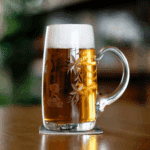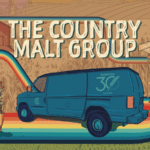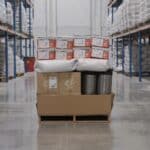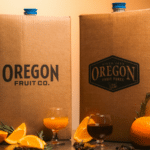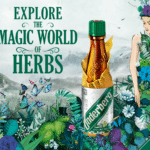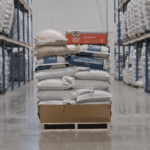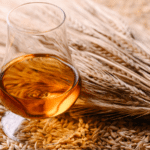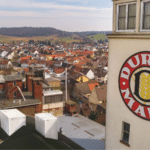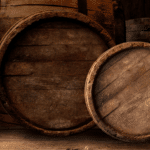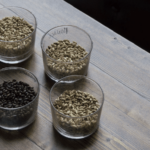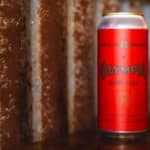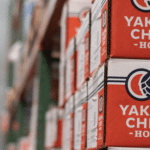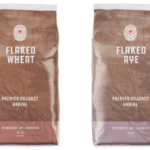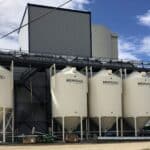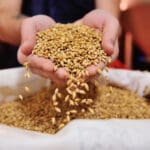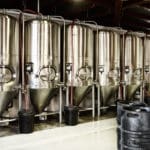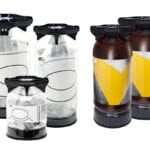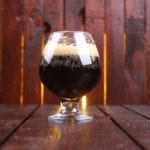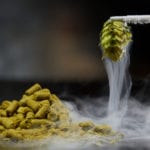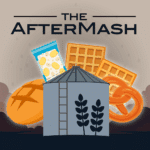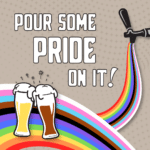
SELTZER MANIA
by Tim RobertsWhy you should consider seltzer production
What may have seemed like a seasonal fad in 2016 has shown surprising market power and longevity. And while some brewers may still hold up their nose at the thought of producing hard seltzers, it has become evident that not making them may well be a decision that leaves revenue on the table, or worse, drives customers away. So rather than shooting yourself in the foot, why not make them better than the guy down the street? In many ways, hard seltzer production is more similar to brewing than many brewers see at first glance.
Hard seltzer is typically about 5% ABV, and so is beer. Beer is a non-distilled alcoholic beverage, dependent on yeast metabolizing sugar to create alcohol, and so is seltzer. Both are “seasoned” with flavorings. Both depend on critical measurements, dependable ingredients, and detailed attention to the process to create a quality version of the style. And at the end of the day, there are objective standards that define whether you have made a good or a lousy seltzer, a pristine and shining example of a continental pilsner or the hot mess “lager” shoved over the taproom bar.
Differences
The most fundamental difference is that beer is built upon wort, and seltzer comes from a pure sugar solution. So in this first step, there is a significant difference which can potentially save you both time and money. True, there is lacking the artistry which comes with doughing in, conversion, and the seamless separation of wort from malt. But you will save hours in your day and find that sugar is often a considerably less expensive source of extract than malt. You want to use a simple and fully fermentable sugar, most commonly either dextrose or sucrose in dry or syrup form. Both are 100% fermentable, abundant in supply, and relatively inexpensive. Choosing a sugar depends on your tolerances for color and flavor, as well as your budget. The syrup vs. solid question is primarily one of size. It is much easier for a smaller brewer to cut open bags and pour them in the kettle to dissolve, while larger brewers may find pumping in totes of syrup to pasteurize the solution easier.
Wort, beautiful wort, is fundamentally a sugar solution and rife with elements which promote a healthy fermentation. So what’s a brewer to do? A crucial step in designing your seltzer is to select the suitable yeast and nutrient.
- Let’s start with yeast. Of course, every lab and bank out there, from Lallemand to Fermentis to White Labs, have strains that will ferment sugar. The keys to selecting the suitable seltzer yeast are performance-based (just like in beer!). You want a strain that is low in esters, high in attenuation and flocculation, and, in many cases, very alcohol tolerant*. These are the building blocks of your seltzer, and it is essential to get it right. There are many examples of “the right yeast,” but selecting yeast for these attributes is crucial in creating an enjoyable seltzer.
- The second piece of the fermentation puzzle is nutrient. How do you make up for all of wort’s nutrients, amino acids, nitrogen, buffering agents, and minerals? You simply add them! Just like the proliferation of yeast strains out there today, nutrients are a dime a dozen. It is crucial to select a product and dosing rate that is appropriate for an all-sugar wash. This is not the “virtually forget-about-it, throw a handful-of-something in the kettle with your protein-coagulant near the end-of-boil” decision like the typical all-malt beer worts which barely need any help at all. With nutrients in seltzers, you give your yeast EVERYTHING (aside from sugar) it needs for a healthy and productive life. Make sure you pick a nutrient designed for this purpose and pay attention to the vendor-suggested dosing rates for both nutrient and yeast. While those numbers may seem outlandish at first glance—and expensive—remember that you are replacing, or more accurately trying to replicate, the wort that you so painstakingly fashion in the brewhouse. And a word to the wise: no matter how well you treat your yeast or how healthy the fermentation is, it is never a good decision to harvest and repatch from all-sugar fermentations.
Hopefully at this point in the process, you’ve achieved the baseline goal of seltzer production: the production of a beverage that tastes like NOTHING – as opposed to typical fermentations which are associated with the fruity esters of ales or the struck-match character in lagers. However, even the best-laid plans sometimes fall short.
Mercifully, at this point, there are a couple of techniques at your disposal.
- The first technique is scrubbing, which is sometimes judiciously employed in traditional brewing. In beer, you need to be careful because stripping any off-flavors with nitrogen or CO2 will also strip the good ones. Likewise, you need to be concerned with the foam positive proteins in beer. Seltzer on the other hand is a flavorless base and cannot hold foam anyways, so you can strip away!
- The second technique is using activated carbon to strip flavor, which is more common in spirits production or as a part of your incoming water supply treatment. While it can be used in powder form, it is more commonly impregnated in filter sheets or packed inside cartridge filters. In those cases, you kill two birds with one stone while you are clarifying your seltzer.
-
Another technique alluded to earlier (alcohol tolerant yeast), is high-gravity brewing. Trimming post-fermentation is a great tool in producing clean seltzer base, though often thought of as a macro move. Struggle as you may to avoid it, fermentation naturally produces esters and even more so when the yeast is stressed. So, trimming at a rate of 25-50% with deaerated water post-fermentation is a straightforward way to simply water away those flavors. You do not have to be concerned with the classic staling pathway of dissolved oxygen (DO) and hops but DO will go a long way toward wrecking any flavorings, so it is important to make sure your trimming water is as free of air as possible. Of course, this is easier for more established brewers who have stripping columns or who employ membrane technology, but temperature, time, and stripping with gas can in fact go a long way towards producing relatively low DO numbers.
A neutral seltzer base is the first step towards the goal, but no one wants to drink just that. Unlike beer where the flavor is derived from malt, hops, and fermentation esters, brewers need to season hard seltzers with alternative flavorings, natural or otherwise. In today’s market, innovation and experimentation have become the norm. With a neutral base, there is no end to a brewers’ palette of creativity. More classic techniques used in traditional brewing are still viable options for hard seltzer, such as adding fruit purees pre-fermentation, and extracts and spices afterward. Adjusting pH with citric or lactic acid is also often a valuable tool. The options are limitless.
Finally, it is essential to consider the presentation of hard seltzer, as your customers drink with their eyes first. Clarity and filtration may be falling out of fashion, but it is still something to consider when choosing a sugar substrate, as dextrose adds a bit of a yellow tint.
Getting Started
Seltzer production is not only an avenue to generate revenue but also a way to flex your “brewing muscles.” It can offer an extra outlet for creativity while presenting new challenges to overcome. Seltzers can be made well or poorly, so why not make the best version you can? Please consult both the Country Malt Group catalog, your area Territory Manager, or me if you have any questions or need elaboration. Hopefully, these words have convinced you to dip your toes in the water or up your game a little.
Looking for more seltzer inspiration?
- Try our hard seltzer recipes: Base Recipe A, Base Recipe B, and High Gravity Recipe.
- View our selection of hard seltzer ingredients here.
- Listen to the “Seltzer Season” episode of The BrewDeck Podcast featuring Tom Kehoe of Yards Brewing! Available on Spotify, Apple Podcasts, and on our website.


